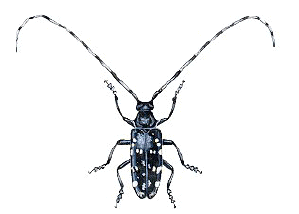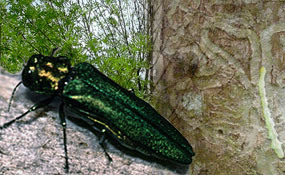
Moving biomass around
 My friend Heather has been
giving me great editing feedback on my
book, and she
brought up an interesting point in response to my chapter about scavenging
biomass.
Heather asked:
My friend Heather has been
giving me great editing feedback on my
book, and she
brought up an interesting point in response to my chapter about scavenging
biomass.
Heather asked:
Is
it appropriate to move biomass from one area to another? Doesn't
that move pests around?
When we go camping on the eastern shore there are all these signs about not bringing in firewood from certain counties because the wood might carry in different bugs.
I'm sure it's OK because you do it, but why is it OK? Are there things that people shouldn't do in terms of moving around biomass so they don't spread / introduce pests?
When we go camping on the eastern shore there are all these signs about not bringing in firewood from certain counties because the wood might carry in different bugs.
I'm sure it's OK because you do it, but why is it OK? Are there things that people shouldn't do in terms of moving around biomass so they don't spread / introduce pests?
Despite Heather's belief that I can do no wrong, she's got an excellent point, and one I hadn't even considered in the context of the garden. Many states prohibit you from moving firewood far (often limiting transport to 50 miles or less) since invasive diseases and insects can come along for the ride and infect areas that used to be safe from their depradations. I can see how moving tree leaves from place to place might present a lower but still real risk.
 In general, I've read that
you shouldn't worry much if you're moving biomass ten miles or less
since an insect might fly that far on its own on a gusty day.
And, of course, processed biomass like cardboard or coffee grounds are
unlikely to host pests.
In general, I've read that
you shouldn't worry much if you're moving biomass ten miles or less
since an insect might fly that far on its own on a gusty day.
And, of course, processed biomass like cardboard or coffee grounds are
unlikely to host pests.I'm also careful, when gathering leaves, to steer clear of areas with invasive herbaceous species, since I don't want seeds of garlic mustard or Japanese stilt grass to germinate in my garden. This problem is probably less thorny, though, since even the most lackadaisical gardener is likely to notice invasive plants before they can make their way into adjacent woodland.
What would you add to those warnings?
Our chicken waterer provides clean water for day
old chicks, broody hens, and your main flock.
Want more in-depth information? Browse through our books.
Or explore more posts by date or by subject.
About us: Anna Hess and Mark Hamilton spent over a decade living self-sufficiently in the mountains of Virginia before moving north to start over from scratch in the foothills of Ohio. They've experimented with permaculture, no-till gardening, trailersteading, home-based microbusinesses and much more, writing about their adventures in both blogs and books.
Want to be notified when new comments are posted on this page? Click on the RSS button after you add a comment to subscribe to the comment feed, or simply check the box beside "email replies to me" while writing your comment.

I think there are more risks from moving biomass and then applying it directly to the garden. If you give it time to compost, you can eliminate a lot of the issues associated with introducing new pests or plants (or that's what I understand.) But if it's the dry mulch you want, then you're probably not going to want to compost it.
I've had a lot of trouble moving things around on my property. Because it has been a farm/pasture for the past 50 years, there is some remnant native forest, but it is dominated by introduced species, some very invasive and others not so bad. That said, the invasives tend to stay in their places (colonies here and there) unless I move them around. I am hesitant to pick up any material for my gardens from other places on the property. I have even had trouble transplanting fruit trees and shrubs from the old homestead area to my place, because any hitchikers in the soil will come along with the root balls.
One exception is composting wood from old piles of trees that we stacked up when we moved here. The only thing that the composted wood gets in it, in terms of plants, are tallow tree seeds. Tallow is invasive, but the seedlings are pretty big and easy to pluck from the garden, so I don't worry about it.
I'm inclined to agree with you about the insects. The 10-mile rule sounds reasonable to me. I don't think there is anything on my property that couldn't have made it to another part of the property on its own. Though, I will admit that I don't know much about the behaviors of most insects.